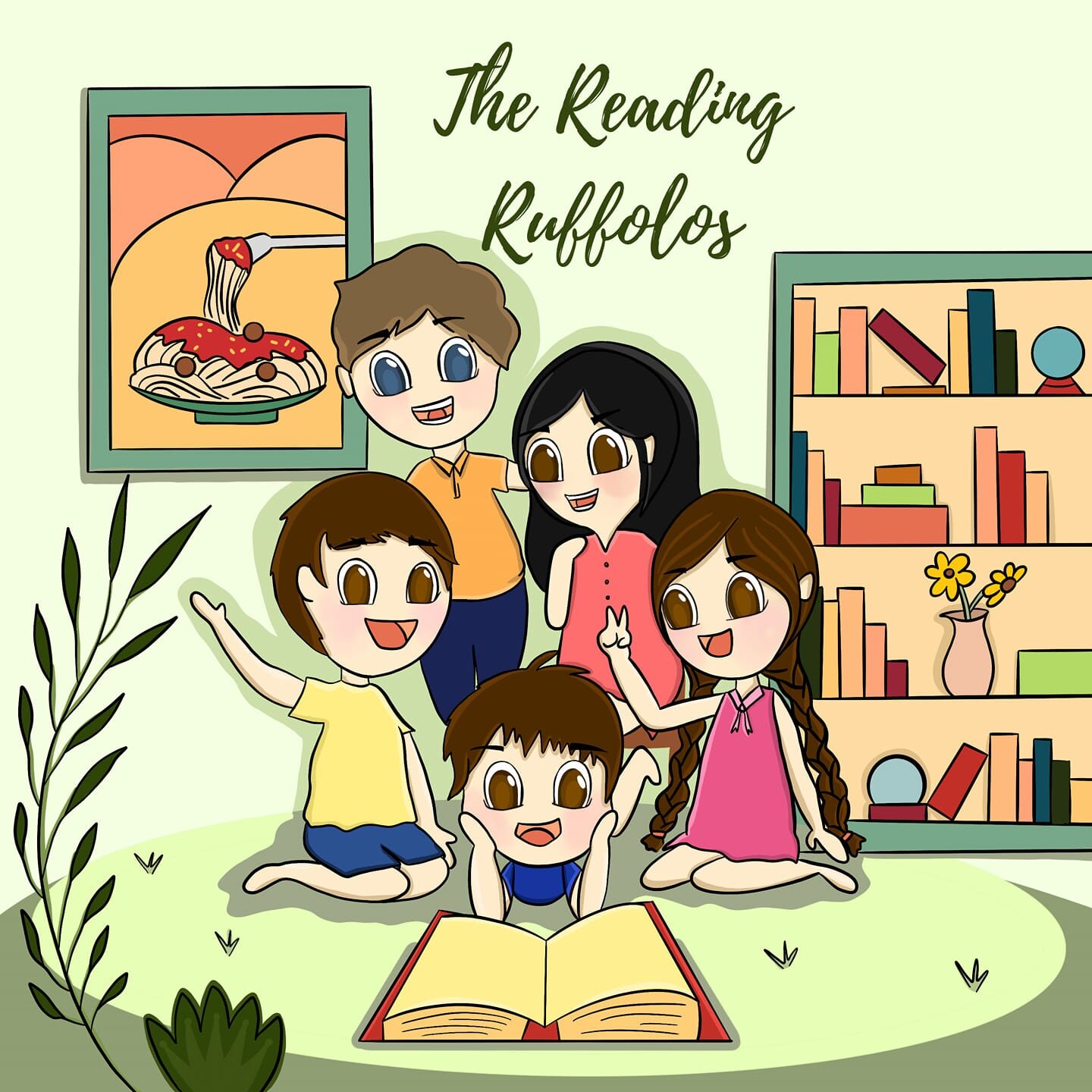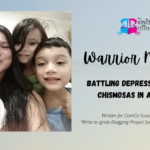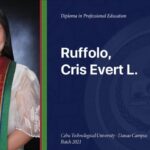
CAUTION: This is a long review – one that had me talking to myself and made my children cringe the moment they saw their Mother going gaga. That’s the photo of them “reading” one of my modules.
I am writing this just to get the thoughts out of my head as I just finished studying about “reading as a skill”. I have an exam on Friday (that’s tomorrow) that would be taken online and I am quite nervous how that would turnout. I am an eternal worrywart and a bit of perfectionist when it comes to studies and so I have been spending the last seven nights thinking about the outcome of this test.

I have been reading about reading and the texts that I have encountered the last seven days have enriched my restless mind with so many facts and concepts that I didn’t realize before.
I didn’t realize that reading instruction can be a complex process. I thought that learning to read is innate. No, it isn’t. Speaking is innate; our brains are hard-wired to learn to speak BUT…not reading. And it’s not easy to teach children how to read.
I learned from my readings that there are two main strands in skilled reading (Aulls 1982): word recognition/identification and language comprehension.
Word recognition and language comprehension are independent but interrelated because without each other, no reading happens as presented by Hoover and Gough in 1990.
Take these equations:
R = D x L; where R is reading, D is decoding and L is language/linguistic comprehension.
* There can be no reading if the child cannot decode (specific reading difficulty).
* There can be no reading if the child cannot comprehend (non-specific reading difficulty).
* There can be no reading if the child cannot decode and cannot comprehend (global reading difficulty).
Under these two strands (word recognition and language comprehension) are different domains that are crucial in reading instruction. (I would truly understand if you find this really boring at this point but I just need to let it out, a review of sorts so I can check if I understood the numerous pages I have been reading the past week).
STRAND 1: WORD RECOGNITION
The reader’s ability to recognized printed symbols and pronounce them, and then attach meaning to these words after they have been appropriately pronounced.
(1) Phonological awareness. This is the awareness that involves the realization that words and sentences are made up of sounds. Sample awareness can be seen in the following questions:
How many syllables are there in the word ‘caterpillar’? (syllabic awareness)
What is the beginning sound of the word ‘bench’? (onset-rime awareness)
What word starts with the same sound as ‘snake’? Sun or moon? (phonemic awareness)
(2) Decoding. This is using the knowledge of letter-sound relationships, letter patterns and structural analysis in figuring out unknown words.
In Kindergarten, I remember being subjected in drills such as “The A says /a/; the B says /b/…” I also remember my fascination of consonant clusters: sh, ch, th, wh.
So reading all these now – and learning about them – just answered my decades-old complaint about teachers doing and repeating those drills.
(3) Sight recognition. This is basically about recognizing familiar words.
There is a much more complex diagram about word identifications that Aulls presented but I am not writing it here. I don’t want to memorize it either.
So these lead us to…
STRAND 2: LANGUAGE COMPREHENSION
Under this, we have background knowledge, vocabulary, language structures, verbal reasonings, and literacy knowledge.
(1) Background knowledge. This means the facts and concepts that the reader beforehand. This means that your child or student will better understand The Legend of the Ampalaya, if she already “met” the vegetable or other vegetables.
(2) Vocabulary. Vocabulary in this context is not just about the number of words that the child knows (refered to as breadth) but it also includes depth (how well does he know how to use these words in different contexts); receptive (how well does he understand these words); and expressive (how he appropriately use these words to make himself understood) in both written and spoken forms.
(3) Language structures. You basically have your syntax (word arrangement) and semantics (refers to meaning) here. That means the child’s knowledge to construct sentences with proper grammar and meaning.
(4) Verbal reasoning. I love this one! Your child’s ability to make inferences and construct meanings from the text that is being read. I think this is when you say “he can read between the lines”. We can put it in here the child’s ability to understand metaphor and inferences.
(5) Literacy knowledge. Why the child knows how to hold a book, read from left to right or top to bottom or knows that a period completes a sentence before moving to the next sentence is part of literacy knowledge.
Learning about all these in this week’s study is overwhelming. I learned about exploring the different dimensions/taxonomies of reading comprehension so I can ask higher level questions to children (allowing them to use higher level thinking skills) and not just limit it to lower level questions (that only requires literal answers to questions).
I love how stalwarts of educations such as Arthur Gates, William Gray, Nila Banton Smith and Thomas Barrett put together these dimensions namely: literal comprehension, interpretation, evaluation (critical reading/thinking), integration (application to self/life), and creative reading. I will not go into details in explaining each one. I can pretty much explain them if I just classify them according to the following:
READING THE LINES: Literal Comprehension
READING BETWEEN THE LINES: Interpretation
READING BEYOND THE LINES: Evaluation, Integration and Creative Reading.
READING AS A SKILL OR A SET OF SKILLS?
Another learning from this week’s lesson is the ongoing debate about reading being a set of skills or just a unitary skill? I tend to believe that it is a unitary skill with subskills that should be interrelated operating at the same time to produce skilled readers.
I like how it is defined as “a level of proficiency of reading text or components of text, with concomittant identifiable skills” (Aulls, 1982).
This means that reading teachers should bear the following in mind:
(1) There is a need to provide enough and regular opportunities for children to read meaningful texts.
(2) Subskills (e.g phonological awareness, decoding, vocabulary, etc) must be interrelated through regular opportunities to read meaningful texts;
(3) There are subskills that do not need to be mastered so you can proceed to other subskills. The thing with treating reading as a set of skills is the danger of just focusing on mastering each skill and not using them altogether to implement a holistic reading program.
(4) The materials that we encourage our children to read should consider their existing subskill knowledge so they can practice the application of these subskills they already learned.
Reading instruction is not a walk in the park. It requires a lot of patience, mastery (if not expertise) in teaching various subskills, and the passion to help develop the child’s reading ability.
The challenge for reading teachers is to create activities that are fun and engaging, which will encourage children to love learning and love reading. How to make creative activities is another story.



